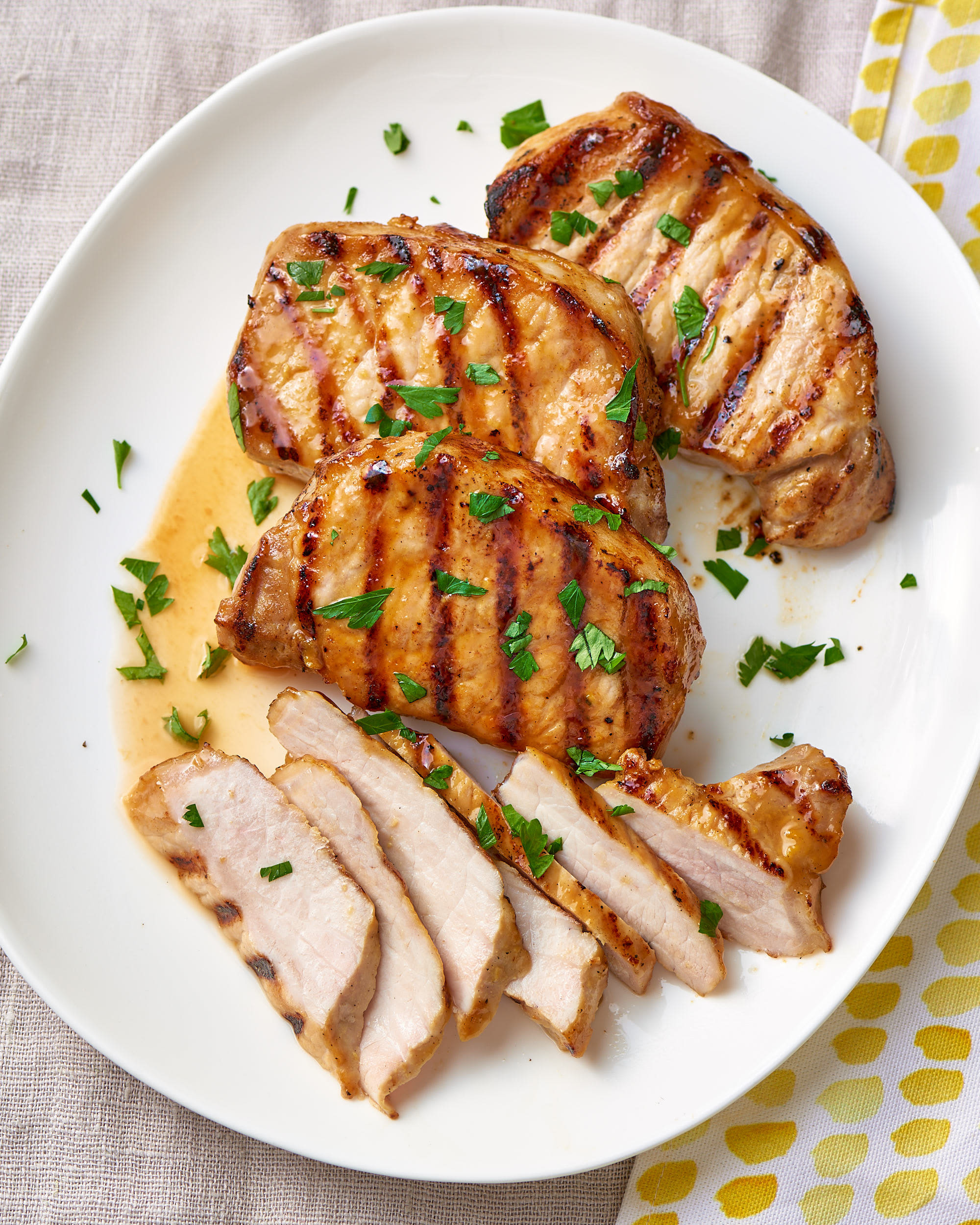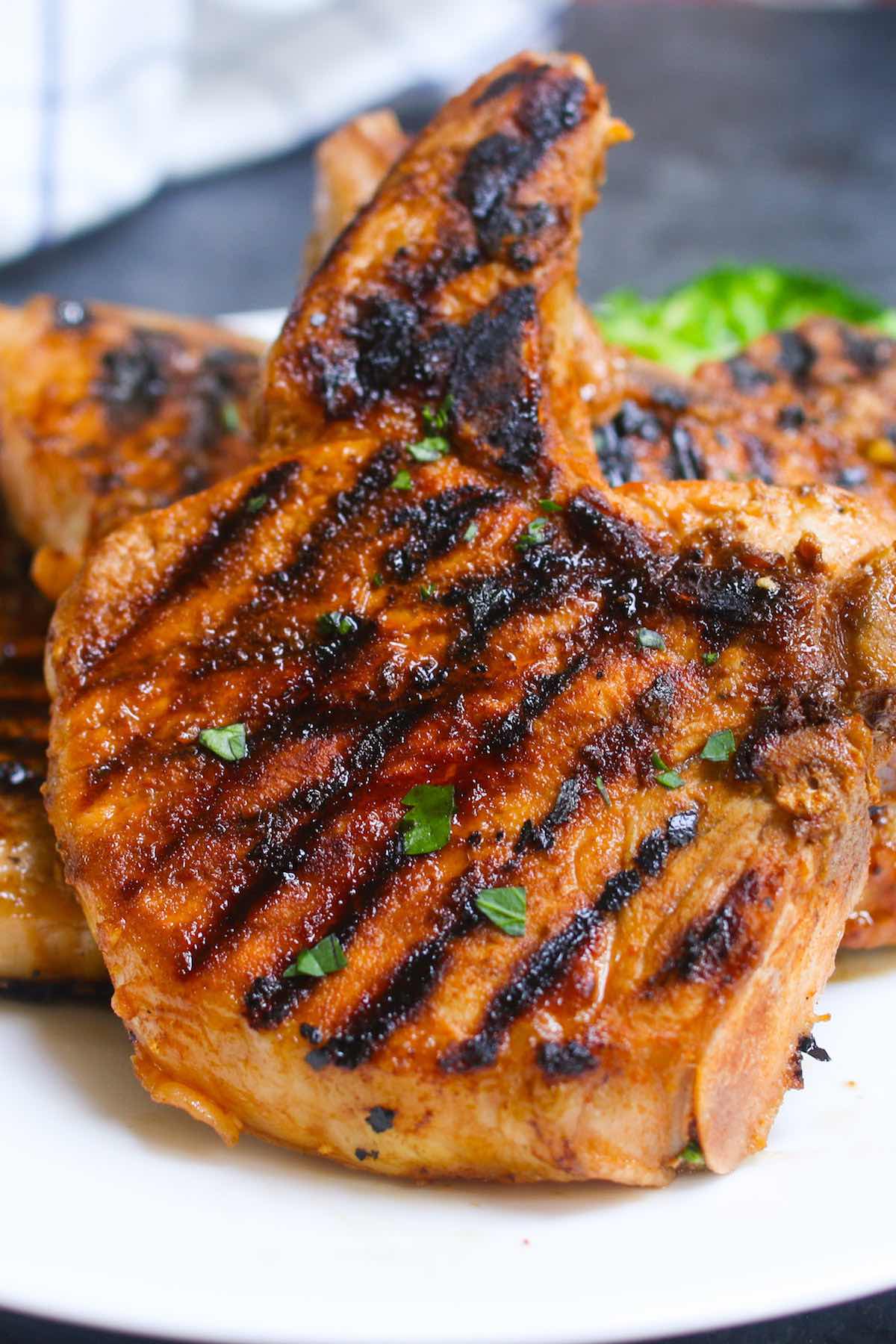Perfect Pork Chop Internal Temp: The Ultimate Guide To Juicy, Tender Delights
Let’s face it, folks—there’s nothing worse than a rubbery pork chop that’s been overcooked to oblivion. But here’s the deal: nailing that internal temp of pork chop is your golden ticket to pork perfection. Whether you’re grilling, frying, or baking, understanding the ideal temperature for pork chops is what separates the amateurs from the pros. And trust me, once you get it right, your taste buds will thank you big time.
Now, I know what you’re thinking—“Isn’t pork supposed to be cooked until it’s bone dry?” Well, that’s old-school thinking. The USDA has updated its guidelines, and today’s pork doesn’t need to be cooked to death to be safe. By hitting the right internal temp of pork chop, you can enjoy a juicy, tender cut that’s both safe and utterly delicious.
So, buckle up, my friends, because we’re diving deep into the world of pork chop cooking. From the science behind temperature to practical tips and tricks, this article has got you covered. By the end of it, you’ll be cooking pork chops like a pro, and your dinner guests will be begging for the recipe. Let’s get started!
- Killing E V E The Untold Story That Will Blow Your Mind
- How Much Is Winona Ryder Worth Unveiling The Net Worth Of A Hollywood Icon
Here’s a quick guide to what we’ll cover:
- The Science Behind Pork Chop Temperatures
- Ideal Internal Temp of Pork Chop
- Cooking Methods and Their Impact
- Must-Have Tools for Perfect Pork Chops
- Pro Tips for Juicy Pork Chops
- Common Mistakes to Avoid
- Variations of Pork Cuts and Their Temps
- Delicious Pork Chop Recipes
- Food Safety and Temperature Guidelines
- Wrapping It Up
The Science Behind Pork Chop Temperatures
Alright, let’s talk science for a sec. Understanding the internal temp of pork chop isn’t just about following a recipe—it’s about ensuring food safety while maximizing flavor. Pork chops, like all meats, undergo chemical changes as they cook. These changes affect texture, juiciness, and even taste.
When pork reaches certain temperatures, proteins begin to denature, and moisture starts to evaporate. If you overcook it, those proteins tighten up, leaving you with a tough, dry chop. But if you stop at the right temp, you’ll lock in all that juicy goodness.
- The Noodle Dance A Cultural Phenomenon Thatrsquos Taking The World By Storm
- P Deddy The Rising Star In The World Of Entertainment
Here’s the kicker: modern pork is far leaner than it was decades ago. That means it cooks faster and is more prone to drying out if you’re not careful. So, knowing the ideal internal temp of pork chop is crucial for achieving that perfect balance of safety and flavor.
How Temperature Affects Texture
Let’s break it down. As pork chops cook, the following happens:
- 120°F (49°C): The meat is still raw, with a bright pink color and plenty of moisture.
- 130°F (54°C): The pork starts to firm up slightly, but it’s still juicy and tender. This is perfect for medium-rare lovers.
- 145°F (63°C): This is the USDA-recommended safe temperature for pork chops. At this point, the meat is fully cooked but still juicy.
- 160°F (71°C) and above: The pork becomes dry and tough. Avoid this zone at all costs unless you want to eat shoe leather.
See why hitting that sweet spot is so important? It’s all about finding the balance between safety and flavor.
Ideal Internal Temp of Pork Chop
So, what’s the magic number? The USDA recommends an internal temp of pork chop at **145°F (63°C)**, followed by a three-minute rest. This ensures the pork is safe to eat while retaining its juiciness.
But here’s the deal: some chefs and home cooks swear by lower temps, especially for bone-in chops. They argue that cooking to 135°F (57°C) and letting the meat rest can yield juicier results. During the resting period, the internal temp rises slightly, reaching the USDA-recommended 145°F.
Ultimately, it’s about personal preference. If you like your pork chops on the juicier side, aim for 135°F. If you’re more conservative, stick to 145°F. Just don’t go above 160°F unless you want to ruin the experience.
Why Resting Matters
Resting is a crucial step that many people overlook. When you remove pork chops from the heat, the internal temp continues to rise—a process known as carryover cooking. This means that even if you pull the chops at 135°F, they’ll reach 145°F after resting.
Resting also allows the juices to redistribute throughout the meat, ensuring a more tender and flavorful bite. So, resist the urge to dig in immediately—trust me, it’s worth the wait.
Cooking Methods and Their Impact
Not all cooking methods are created equal when it comes to achieving the perfect internal temp of pork chop. Let’s explore the most popular methods and how they affect the final result.
Pan-Seared Pork Chops
Pan-searing is a classic method that delivers a crispy exterior and a juicy interior. The key is to start with a hot pan and sear the chops on high heat to develop a nice crust. Then, reduce the heat and finish cooking until the internal temp reaches your desired level.
Grilled Pork Chops
Grilling adds a smoky flavor that’s hard to beat. For best results, use indirect heat to avoid burning the outside while the inside cooks. A meat thermometer is your best friend here, as it’s easy to overcook pork chops on the grill.
Oven-Baked Pork Chops
Baking is a hands-off method that works well for boneless chops. Preheat your oven to 400°F (200°C) and bake the chops until they reach the ideal internal temp. For extra flavor, sear the chops on the stovetop before transferring them to the oven.
Must-Have Tools for Perfect Pork Chops
Having the right tools can make all the difference in achieving the perfect internal temp of pork chop. Here are my top picks:
- Instant-Read Thermometer: A must-have for checking the internal temp quickly and accurately.
- Cast-Iron Skillet: Great for searing and finishing chops in the oven.
- Meat Tenderizer: Helps break down tough fibers for a more tender chop.
- Grill Thermometer: Essential for maintaining the right temperature on the grill.
Investing in these tools will not only improve your cooking but also save you from the heartbreak of overcooked pork chops.
Pro Tips for Juicy Pork Chops
Here are some expert tips to take your pork chops to the next level:
- Marinate your chops for at least an hour to add flavor and moisture.
- Pat the chops dry with paper towels before cooking to ensure a crispy crust.
- Use a meat thermometer to monitor the internal temp of pork chop accurately.
- Let the chops rest for a few minutes after cooking to lock in the juices.
These simple tricks can make a world of difference in the final result.
Common Mistakes to Avoid
Even the best cooks make mistakes. Here are some common pitfalls to watch out for:
- Overcooking: This is the biggest sin in pork chop cooking. Always check the internal temp to avoid drying out the meat.
- Not Resting: Skipping the resting period can result in dry, flavorless chops.
- Using Low Heat: Cooking on too low a heat can lead to uneven cooking and a lack of crust.
- Ignoring the Thermometer: Guessing the internal temp is a recipe for disaster. Always use a thermometer.
Avoid these mistakes, and you’ll be well on your way to pork chop perfection.
Variations of Pork Cuts and Their Temps
Not all pork cuts are the same, and each requires a slightly different approach. Here’s a quick rundown:
- Bone-In Pork Chops: These benefit from lower temps and longer cooking times to ensure tenderness.
- Boneless Pork Chops: These cook faster and are best suited for high-heat methods like pan-searing.
- Pork Loin: This lean cut needs careful attention to avoid drying out. Aim for 135°F-145°F.
Understanding the differences between cuts will help you choose the right method and temp for each.
Delicious Pork Chop Recipes
Ready to put your newfound knowledge into practice? Here are a couple of recipes to try:
Classic Pan-Seared Pork Chops
Ingredients:
- 4 bone-in pork chops
- Salt and pepper
- 2 tbsp olive oil
- 2 cloves garlic, minced
- 1 tbsp fresh thyme
Instructions:
- Season the chops generously with salt and pepper.
- Heat the olive oil in a cast-iron skillet over high heat.
- Add the chops and sear for 4-5 minutes on each side.
- Reduce the heat to medium and add the garlic and thyme.
- Cook until the internal temp reaches 135°F-145°F.
- Let rest for 5 minutes before serving.
Grilled Herb-Crusted Pork Chops
Ingredients:
- 4 boneless pork chops
- 2 tbsp olive oil
- 2 tbsp breadcrumbs
- 1 tbsp fresh parsley, chopped
- 1 tbsp fresh rosemary, chopped
Instructions:
- Preheat the grill to medium-high heat.
- Mix the breadcrumbs, parsley, and rosemary in a bowl.
- Brush the chops with olive oil and coat with the breadcrumb mixture.
- Grill for 6-8 minutes on each side, or until the internal temp reaches 135°F-145°F.
- Let rest before serving.
Food Safety and Temperature Guidelines
Food safety is no joke, folks. Here are some guidelines to keep in mind:
- Always cook pork chops to at least 145°F for safety.
- Wash your hands and utensils thoroughly after handling raw pork.
- Store leftovers in the fridge within two hours of cooking.
Following these guidelines will help you enjoy delicious pork chops without worrying about foodborne illnesses.
Wrapping It Up
There you have it, folks—the ultimate guide to mastering the internal temp of pork chop. Whether you’re a seasoned chef or a cooking novice, understanding the ideal temperature is key to achieving juicy, tender pork chops every time.
Remember, the magic number is 145°F, but don’t be afraid to experiment with lower temps if you prefer a juicier chop. And always let your chops rest to lock in those delicious juices.
So, what are you waiting for? Grab your thermometer, fire up the grill, and get cooking! And don’t forget to share your pork chop adventures in the comments below. Happy cooking, my friends!



Detail Author:
- Name : Geraldine Littel
- Username : hbailey
- Email : ytrantow@okuneva.com
- Birthdate : 1979-01-05
- Address : 2263 Alayna Lock Gulgowskistad, TX 43523-7891
- Phone : +13515100023
- Company : Hahn-Hodkiewicz
- Job : User Experience Researcher
- Bio : Aliquid alias numquam quos dolores asperiores. Aspernatur atque sint dolorem fugit sit aut consequatur quod. Veritatis et tempora omnis quod reprehenderit in quo.
Socials
twitter:
- url : https://twitter.com/foster_carter
- username : foster_carter
- bio : Ea error impedit deleniti et iusto voluptas. Accusamus natus minus et nulla dolorem. Laudantium et libero consequatur voluptas assumenda ipsa recusandae.
- followers : 4225
- following : 2246
facebook:
- url : https://facebook.com/foster_carter
- username : foster_carter
- bio : Dolore ut nostrum qui ea eos blanditiis consequatur.
- followers : 2301
- following : 2887
linkedin:
- url : https://linkedin.com/in/carter2015
- username : carter2015
- bio : Et maiores quia autem debitis.
- followers : 859
- following : 1930
instagram:
- url : https://instagram.com/fcarter
- username : fcarter
- bio : Possimus atque corrupti dolores. Veniam aut facilis nulla voluptate. Dolorem iure quod aut dicta.
- followers : 5984
- following : 2316
tiktok:
- url : https://tiktok.com/@carterf
- username : carterf
- bio : Eligendi aliquam repellat rerum id est est. Aut non corrupti laborum et optio.
- followers : 2130
- following : 630